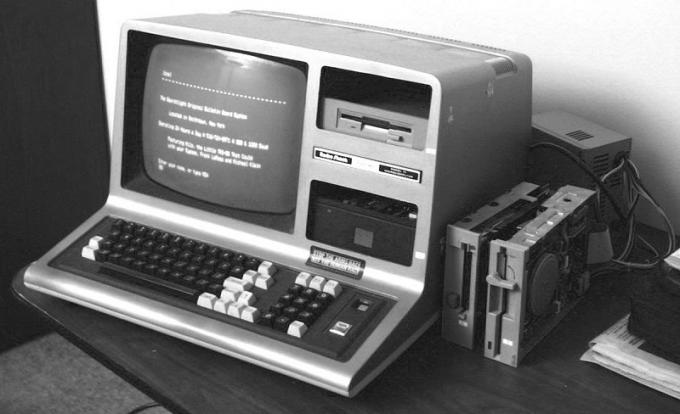
In this article we are going to share with you a little about the advance, history and evolution of computers.
You computers have been around for much longer than most people realize. The word “computer” has changed its meaning over the decades, but the electronic computer we think of in modern times developed over the second half of the 20th century. Its popularity as a household item emerged in the 1980s after the arrival of Apple operating systems. Apple and Microsoft, who mixed graphics and text, replacing the text-only systems of the decade of the 1970. In the 1990s, computers incorporated enhanced communication and multimedia applications and became an indispensable part of the daily lives of millions of people.
Index
The original definition of the word “computer” was a person who did calculations. This definition dates back to the 1600s and extends to the mid-20th century, when the term “computer” began to refer to a machine. The computer is based on the same concept as the abacus, which goes back many centuries. Technology took a giant leap with punch cards, introduced by Joseph-Marie Masquard in 1801. Interestingly, an early use of this system involved music, in which the piano rolls actions assigned to notes on a piano, leading to the “piano of player” in the 1870s In 1835, Charles Babbage combined punch cards with a steam engine to invent what he called an “engine analytical".
The IBM company grew out of the invention of the tabulator, created by Herman Hollerith in the late 1880s. This was the first use of punch cards representing data as opposed to punch cards that automate a mechanical function like a player piano. The information processing world during the 1950s was based on a combination of punch cards, the tabulator, and major punching machines. The first calculators appeared in the 1930s. Analog machines began to be replaced by the digital concept of zeros and ones throughout World War II. The first computer made for the masses was the UNIVAC, manufactured by Remington Rand in 1951. IBM introduced its mainframe computer the following year.
Early Remington computers sold for over a million dollars a machine, but IBM made smaller, more affordable machines that became popular. In 1954, IBM developed Fortran, one of the original programming languages, based heavily on mathematics. During the same decade, developments in the transistor, integrated circuits, and microprogramming led to the downsizing of the computer. Meanwhile, processors have increased the computer's processing speed and memory has improved data storage. The arrival of microprocessors introduced by Texas Instruments and Intel in the early 1970s paved the way for miniaturized but more powerful computers.

History and Evolution of Computers
Until the 1970s, computers were mainly used by businesses, government and universities. Personal computers first appeared on the market in the late 1970s. Apple introduced the Apple I in 1976 and the Apple II the following year, ushering in an era for the masses who use computers at home. From then on, the software industry began to develop, with Microsoft and Apple as the main companies. Microsoft became a software giant by marketing its DOS operating system with IBM computers starting in 1984. Apple introduced the Macintosh in 1984, marking the beginning of graphics and text, replacing systems that only displayed text. Since then, Apple has called its computer system “Mac” to differentiate itself from the rest of the PC market.
During the 1990s, the computer grew in popularity and became a common household item. Microsoft's Windows 95 operating system accelerated the mass use of computers, while the The growth of the World Wide Web during the 1990s also helped to attract interest in computers. Soon, almost all professions needed software to improve their product or service. In the first decade of the 2000s, Microsoft introduced the XP and Vista operating systems, while Apple offered the OS X series through Leopard. These developments, along with other popular software applications, meant that the average person now had access to robust multimedia tools.
1st GENERATION:
2nd GENERATION:
3rd GENERATION:
4th GENERATION:
Personal computing became truly portable in the late 1990s and 2000s with the development of advanced PDAs, the touchscreen smartphone and tablet PCs. game with the launch of the iPhone in June 2007, but other manufacturers, including Samsung and Nokia, soon developed their own smartphones and touchscreen mobile devices. This new generation of devices took advantage of several technological advances – including processor miniaturization, flash memory, and High-speed Wi-Fi wireless Internet and 3G mobile data networks – to put the power of your personal computer in your purse and pocket.
Always thinking of making it easy for you, (readers of education and transformation), we decided to make all the Summary on the History and Evolution of Computers for download in PDF.
To access the material, check the following link and download:
Subscribe to our email list and receive interesting information and updates in your email inbox
Thanks for signing up.


